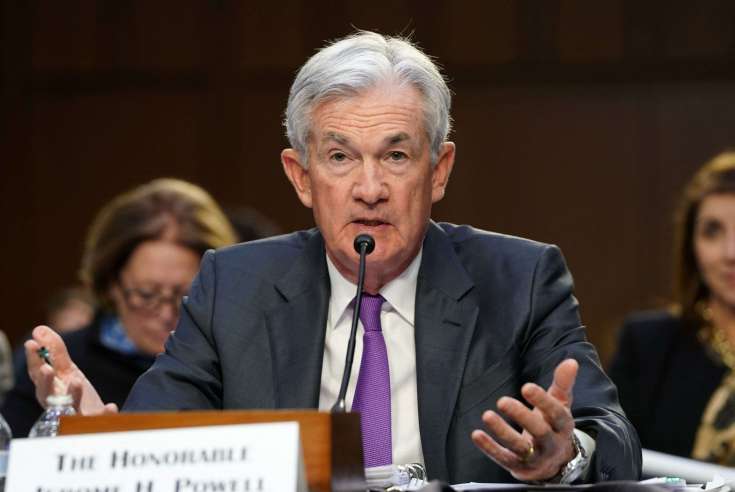
Federal Reserve Chair Jerome H. Powell testifies before a U.S. Senate Banking, Housing, and Urban Affairs Committee hearing on “The Semiannual Monetary Policy Report to the Congress” on Capitol Hill in Washington, U.S., March 7, 2023.
Kevin Lamarque | Reuters
Federal Reserve Chairman Jerome Powell on Tuesday cautioned that interest rates are likely to head higher than central bank policymakers had expected.
Citing data earlier this year showing that inflation has reversed the deceleration it showed in late 2022, the central bank leader warned of tighter monetary policy ahead to slow a growing economy.
“The latest economic data have come in stronger than expected, which suggests that the ultimate level of interest rates is likely to be higher than previously anticipated,” Powell said in remarks prepared for two appearances this week on Capitol Hill. “If the totality of the data were to indicate that faster tightening is warranted, we would be prepared to increase the pace of rate hikes.”
Those remarks carry two implications: One, that the peak, or terminal, level of the federal funds rate is likely to be higher than the previous indication from the Fed officials, and, two, that the switch last month to a smaller quarter-percentage point increase could be short-lived if inflation data continue to run hot.
In their December estimate, officials pegged the terminal rate at 5.1%. Current market pricing is a bit higher than that, in the 5.25%-5.5% area, according to CME Group data. Powell did not specify how high he thinks rates ultimately will go.
The speech comes with markets generally optimistic that the central bank can tame inflation without running the economy into a ditch. Stocks were slightly negative while Treasury yields jumped after Powell’s remarks were released.
However, January data shows that inflation as gauged by personal consumption expenditures prices — the preferred metric for policymakers — was still running at a 5.4% pace annually. That’s well above the Fed’s 2% long-run target and a shade above the December level.
Powell said the current trend shows that the Fed’s inflation-fighting job is not over.
“We have covered a lot of ground, and the full effects of our tightening so far are yet to be felt. Even so, we have more work to do,” he said.
Powell speaks Tuesday to the Senate Banking, Housing and Urban Affairs Committee then will address the House Financial Services Committee on Wednesday.
The Fed has raised its benchmark fund rate eight times over the past year to its current targeted level between 4.5%-4.75%. On its face, the funds rate sets what banks charge each other for overnight lending. But it feeds through to a multitude of other consumer debt products such as mortgages, auto loans and credit cards.
In recent days, some officials, such as Atlanta Fed President Raphael Bostic, have indicated that they see the rate hikes coming to a close soon. However, others, including Governor Christopher Waller, have expressed concern about the recent inflation data and say tight policy is likely to stay in place.
“Restoring price stability will likely require that we maintain a restrictive stance of monetary policy for some time,” Powell said. “The historical record cautions strongly against prematurely loosening policy. We will stay the course until the job is done.”
Powell noted some progress on inflation for areas such as housing.
However, he also noted “there is little sign of disinflation” when it comes to the important category of services spending excluding housing, food and energy. That is an important qualifier considering that the chairman at his post-meeting news conference in early February said the disinflationary process had begun in the economy, remarks that helped send stocks higher.
Markets mostly expect the Fed to enact a second consecutive quarter-point, or 25 basis points, rate increase at the Federal Open Market Committee meeting later this month. However, traders are pricing in close to a 30% probability of a higher half-point increase, according to CME Group data.
Powell reiterated that rate decisions will be made “meeting by meeting” and will be dependent on data and their impact on inflation and economic activity, rather than a preset course.


